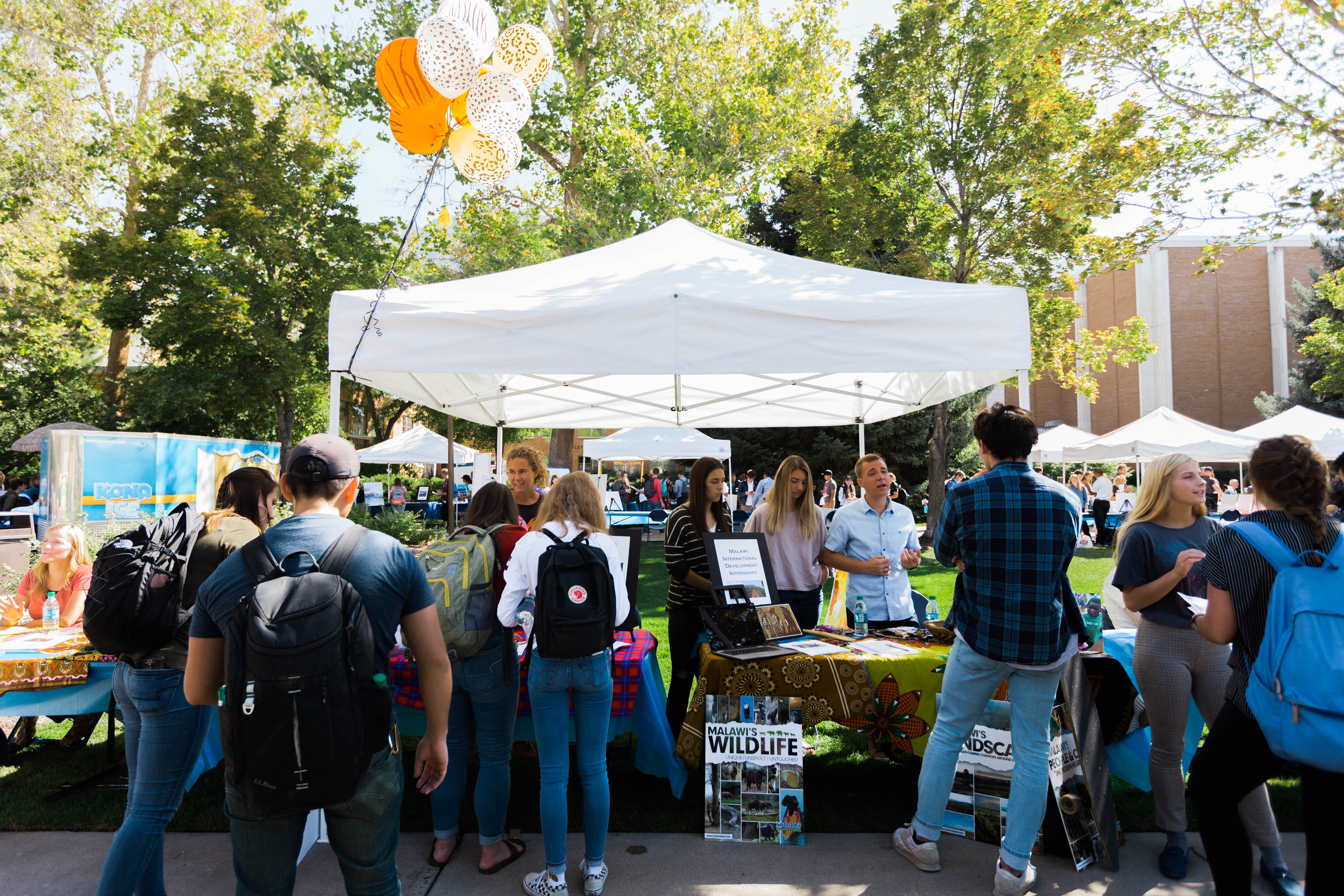
A soft din permeated through the Marigold Square during the Study Abroad Fair on Sept. 20 as students and faculty members shared their experiences about the benefits of studying abroad.
Study Abroad Fair coordinator Aaron Rose said study abroad programs allow students to gain skills related to their major and life in an international setting at a relatively low cost.
“There are a lot of hard skills students gain on these programs that help them get ahead in their majors,” Rose said. “They get to see engineering in action or get to do real work in the field.”
Rose said there are also intangible, soft skills students pick up on these international experiences like flexibility and being able to cope with the unknown.
“I was a little nervous because I didn’t know anyone else going. I didn’t know if most people went with friends,” said Jessica Healy, a student who recently went on public health study abroad in Europe. “I ended up making lifelong friends on the trip.”
Rose mentioned price as a frequent reason why students are hesitant to go on study-abroad trips.
While some of these programs seem expensive, the Kennedy Center makes an active effort to keep prices low. According to its website, the Kennedy Center said its costs are roughly half of other universities.
The International Institute of Education estimated studying a semester abroad to cost $17,785 according to Fox Business. In contrast, one of BYU’s most expensive study abroad programs — a program that visits 11 different countries — is estimated to cost $11,000–13,000 including airfare.
The Scandinavian study abroad internship is estimated to cost between $2,900 and $3,400, including housing.
Cheap prices are often the result of department assistance. The Humanities department offers funding for their students doing internships. Other departments subsidize study abroad programs, reducing prices by hundreds of dollars.
Any scholarships earned that would pay for classes on campus can also help pay for a study abroad. Different clubs and departments on campus also offer scholarships specifically for study abroad programs.
“This study abroad is normally around $5,000 but was only $3,000 after my scholarship. This made price not that big of an issue for me,” said Austin Morris, a student who went on the Africa Business and Technology study abroad.
Any federal financial aid can also be used to fund a study abroad. If students qualify for Pell Grants or federal student loans, they can use these funds towards the cost of the study abroad.
Rose said these opportunities truly give students a unique and valuable experience. With over 200 programs, he said he believes most students can find one that is worth the cost.
“I had never been to Europe and knew I wanted to go. I am a science major and want to go to PA school, so I wanted to do an applicable study abroad,” Healy said. “It was cool that I could see all of Europe and still have it be useful to my field and future career.”
Morris wanted to travel to Africa to participate in humanitarian aid, and he found a study abroad program that fit his needs as well. Morris and Healy both said they consider their study abroad as life-changing experiences that were worthwhile.
Students can find out more information about which programs meet their needs online at the Kennedy Center’s website or at their physical offices in the Herald R. Clark Building.




